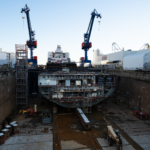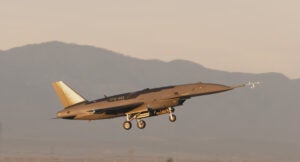
NATIONAL HARBOR, Md. – Lockheed Martin [LMT] on Monday revealed an in-development longer range variant of the AGM-158 cruise missile, the XR. The new AGM-158 XR is being developed only through internal research and development funding to make a longer-range version of the AGM-158B Joint Air-to-Surface Standoff Missile Extended Range (JASSM-ER) and the AGM-158 Long Range Anti-Ship Missile (LRASM), company officials told reporters here during the Air and Space Force Association’s Air, Space and Cyber conference. Michael Rothstein, vice president…

 By
By 








